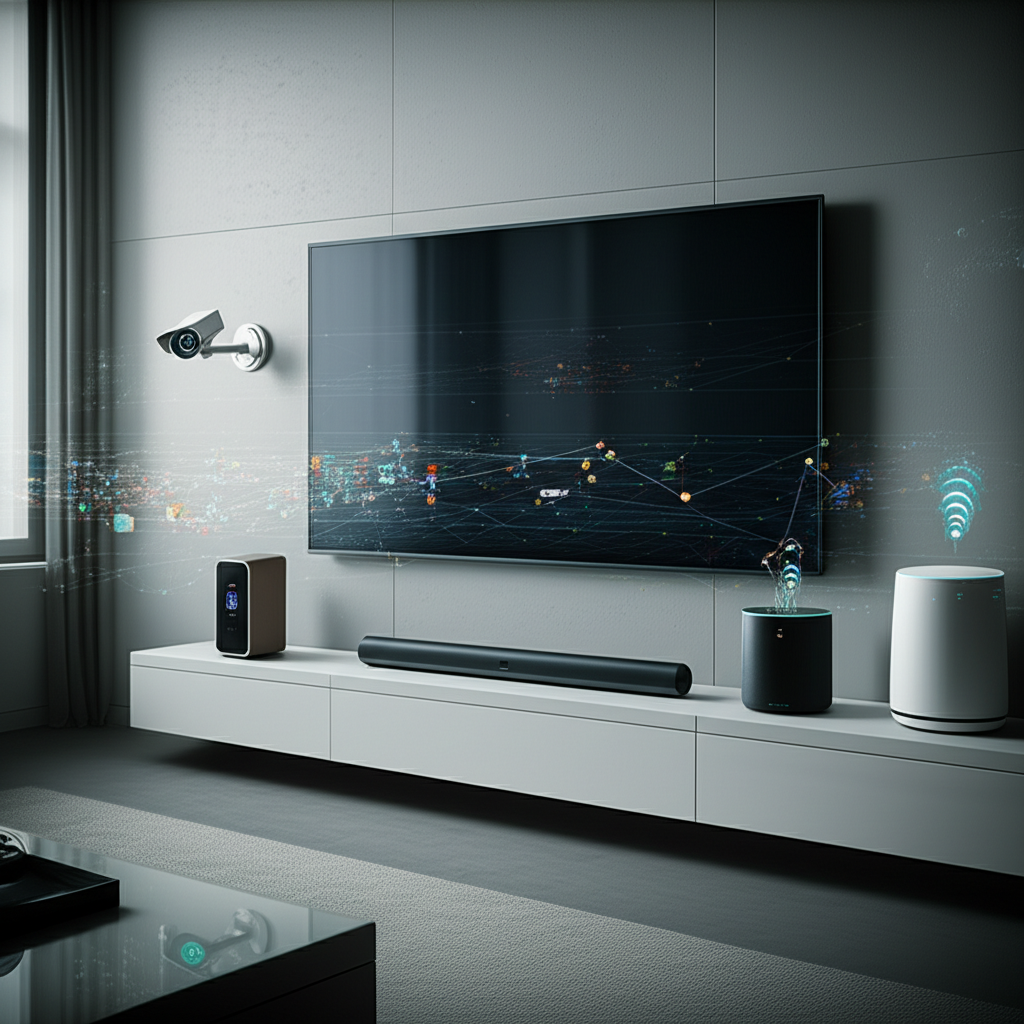Are you comfortable knowing your refrigerator might be sharing your grocery list with advertisers… or worse, hackers? It sounds like science fiction, but the reality is that your "smart" home devices could be silently compromising your privacy and security. In fact, the problem is more common than you think. Here's why and, more importantly, what you can do about it right now.
Why Are My Smart Home Devices Spying On Me?
The core reason your smart home devices are spying on you boils down to one thing: data. Companies collect massive amounts of data through these devices, driven by the desire to personalize services, target ads, and improve products. However, this data collection often comes at the expense of your privacy.
The Data Goldmine
Think about it: your smart thermostat knows when you're home and away, your smart TV records your viewing habits, and your voice assistant listens to your conversations. This information paints a detailed picture of your daily life, preferences, and even your vulnerabilities.
- Personalized Advertising: Companies use your data to target you with personalized ads, which can be annoying but relatively harmless.
- Data Breaches: More concerningly, this data can be vulnerable to breaches, exposing your sensitive information to cybercriminals.
- Profiling and Discrimination: Data can also be used for profiling and discrimination, impacting everything from insurance rates to loan applications.
How Dangerous Is This Really?
The potential dangers are very real. Your seemingly harmless smart devices can be exploited in ways you might not imagine.
Real-World Examples
- Home Security Risks: A smart lock with a weak password could be easily hacked, granting intruders access to your home.
- Financial Fraud: Stolen data, including banking details from voice commands, can be used for financial fraud.
- Privacy Invasions: Personal conversations recorded by smart speakers can be leaked or sold, leading to embarrassing or even damaging privacy invasions.
- Physical Safety: As mentioned in the reference material, a hacked thermostat can reveal vacation schedules to potential burglars.
What Devices Are Most Vulnerable?
While all connected devices pose some risk, certain categories are particularly vulnerable:
- Security Cameras: These devices often have weak security protocols and can be easily hacked, allowing intruders to monitor your home.
- Smart Speakers and Assistants: These devices are always listening, raising privacy concerns about what's being recorded and stored.
- IoT Devices with Default Passwords: Many devices ship with default passwords that are never changed, making them easy targets for hackers.
- Fitness Equipment: Yes, even your smart treadmill could be vulnerable, potentially capturing conversations and health data.
How Can I Protect My Privacy? Practical Steps
Fortunately, you can take steps to protect your privacy and secure your smart home. These aren't complex fixes, and they can make a huge difference.
1. Segment Your Network
Create separate networks for different types of devices.
- Business/Sensitive Network: Use this network for your work computer, banking transactions, and other sensitive activities.
- Family/Entertainment Network: This network is for general internet use, streaming, and social media.
- IoT Network: Dedicate a separate network solely for your smart home devices. This isolates them from your more sensitive data.
2. Strong Passwords and Password Manager
This cannot be stressed enough.
- Use Strong Passwords: Create complex passwords that are difficult to guess.
- Unique Passwords: Use different passwords for each device and account.
- Password Manager: Consider using a reputable password manager to securely store and manage your passwords.
3. Cover Your Webcams
It's a simple but effective measure.
- Physical Covers: Use physical webcam covers on your computers, laptops, tablets, and fitness equipment when you're not using the camera.
- Mute Devices: Put your devices on "mute" when you're not actively using them.
4. Professional Input
Don't just plug and play.
- Professional Setup: Avoid adding new smart devices to your home network without professional input. Correct device setup is critical.
- Pre-Move Inspection: Before moving into a new home, find out what internet-enabled devices are built in and assess their security.
5. Review Privacy Settings
- Read the Fine Print: Understand what data your devices are collecting and how it's being used.
- Adjust Settings: Adjust privacy settings to limit data collection and sharing.
- Opt-Out: Opt-out of data collection and sharing whenever possible.
Frequently Asked Questions
Are all smart home devices inherently insecure?
No, not all smart home devices are inherently insecure. However, many have vulnerabilities due to weak security protocols, default passwords, or poor privacy practices. It's crucial to research and choose devices from reputable manufacturers with strong security features and transparent privacy policies.
What is the biggest privacy risk with smart speakers like Amazon Echo or Google Home?
The biggest privacy risk is the constant listening. These devices are always "listening" for their wake word, which means they are potentially recording and storing your conversations. While companies claim these recordings are only used to improve the device's performance, there is always a risk of data breaches or misuse.
Can a hacker really control my smart thermostat or refrigerator?
Yes, it's possible. If your smart devices are connected to the internet and have weak security, they can be hacked. A hacker could potentially control your thermostat to monitor your home or even access your refrigerator to gather information about your habits and preferences.
Take Control of Your Smart Home Security
The convenience of smart home devices shouldn't come at the cost of your privacy and security. By understanding the risks and taking proactive steps to protect your data, you can enjoy the benefits of a connected home without compromising your peace of mind. Start today by segmenting your network, strengthening your passwords, and reviewing your privacy settings. Your digital safety is in your hands. Don't wait until it's too late.

